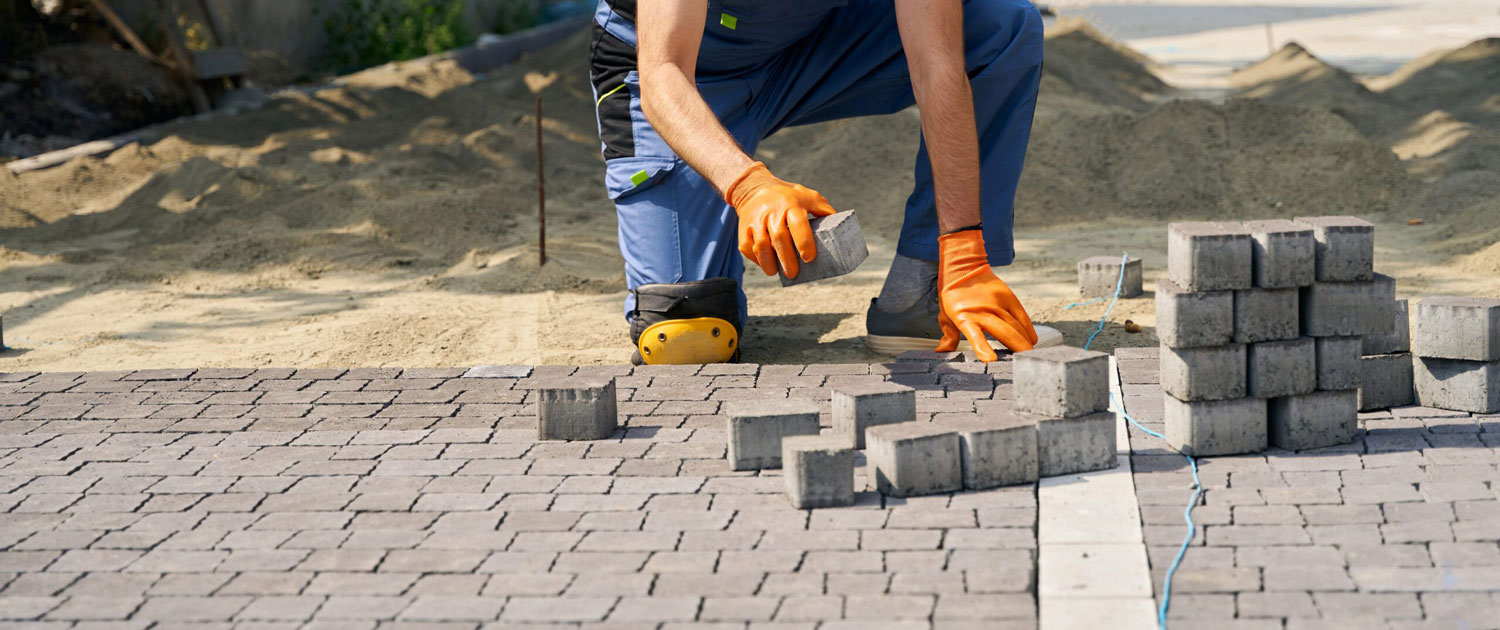If you’re pricing stamped concrete Long Island projects for a patio, driveway, or walkway, read this first—our guide shows why many Nassau and Suffolk homeowners choose pavers instead.

Stamped Concrete Long Island Options: Better Than Pavers?
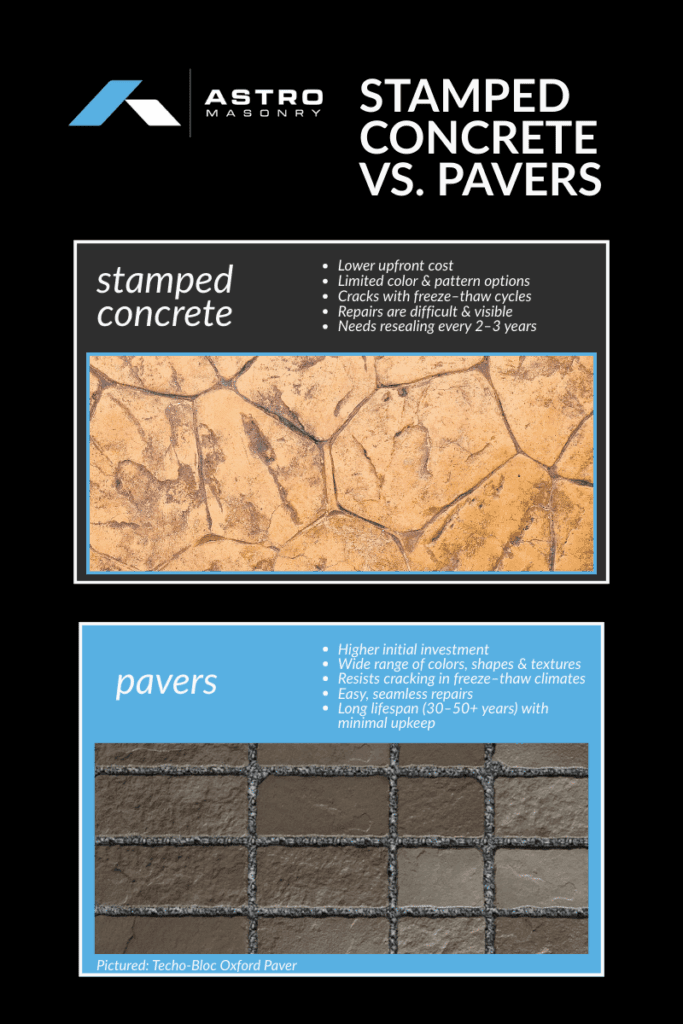
Choosing between stamped concrete and pavers involves factors like freeze-thaw durability, maintenance, cost, and aesthetics. Long Island’s weather can be tough on outdoor surfaces. Here’s how the materials compare:
| Factor | Stamped Concrete | Paver System |
| Durability | Prone to cracking under freeze-thaw stress. | Excellent resistance to cracking and salt. |
| Maintenance | Requires sealing. Repairs are often visible. | Occasional re-sanding; individual units easily replaced. |
| Installation | Poured on-site, quick, but requires curing. | Laid by hand, slower but ready for use immediately. |
| Repair | Cracks may need full section replacement. | Simple to replace damaged units. |
| Cost | $8–$18/sq ft. | $10–$20/sq ft. |
| Aesthetics | Mimics stone; limited design changes after pour. | Vast color, shape, and layout options. |
Durability in Long Island Winters
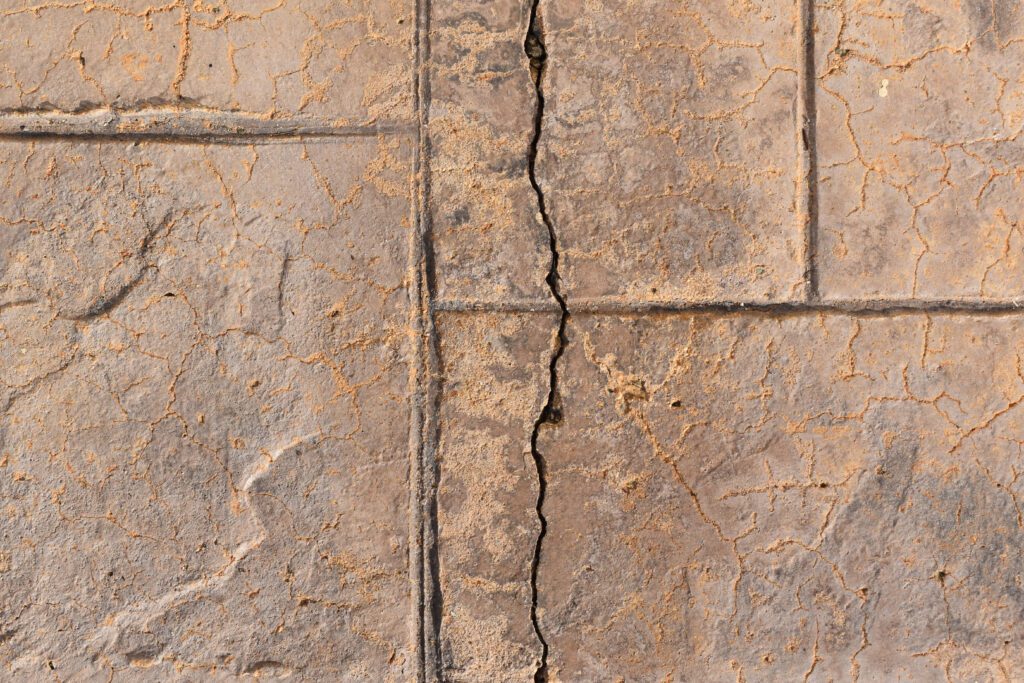
Stamped concrete is a single slab that doesn’t flex with freeze-thaw cycles, making it susceptible to cracks and surface damage. Regular sealing helps, but doesn’t eliminate risk. In contrast, pavers are modular and high-density, with sand-filled joints that shift slightly with the ground, making them ideal for Long Island’s climate.
Repairing Stamped Concrete vs. Paver Maintenance
Stamped concrete repairs are often visible and expensive. Cracks above and below the surface may require resurfacing. Pavers are easier to maintain. If one cracks or settles, it can be replaced without affecting the rest.
Cost of Pavers vs. Concrete
Stamped concrete typically costs $8–$18 per square foot, while pavers range from $10–$20. Though stamped concrete may be cheaper upfront, pavers offer lower lifetime maintenance and easier repairs, which may save money long-term.
Stamped Concrete Design vs. Paver Design
Stamped concrete can resemble stone or brick but has repeating patterns and limited flexibility. Pavers come in numerous styles from top brands like Cambridge, Techo-Bloc, and Unilock, with options for borders, mosaics, and contrasting textures.
Paver Installation vs. Stamped Concrete Installation
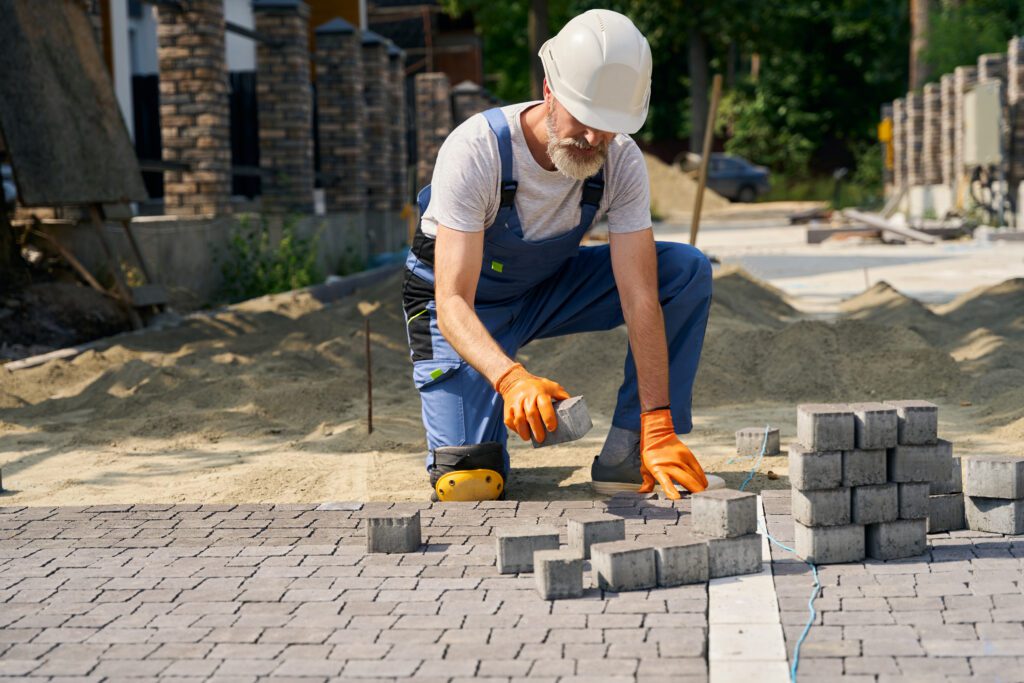
Stamped concrete is poured and stamped on-site and needs days to cure. It requires precise timing and weather conditions. Pavers are laid on a compacted base and can be installed in phases. They’re ready for use immediately and offer easier layout changes.
Top Paver Brands at Astro Masonry
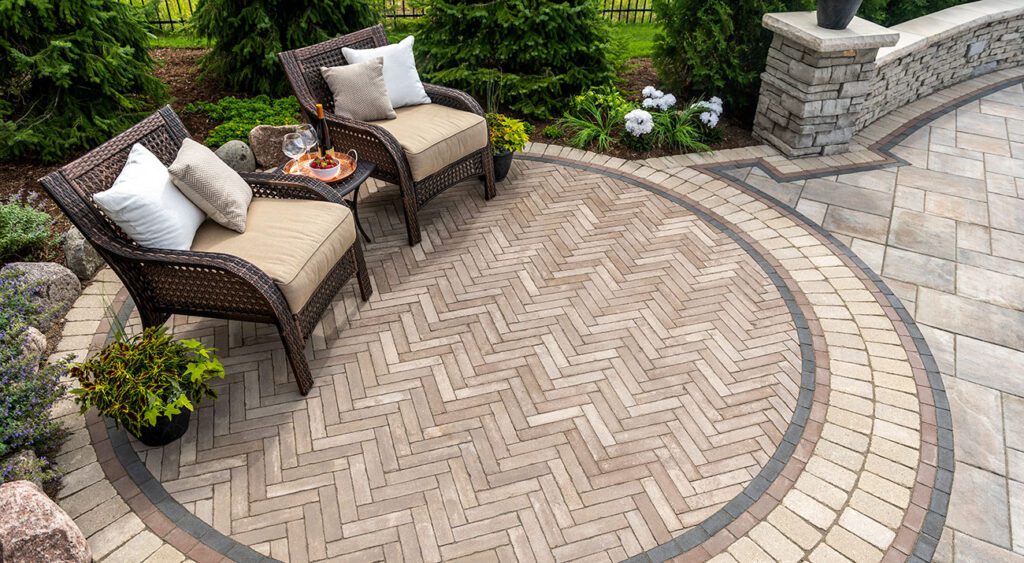
- Cambridge Pavers feature ArmorTec® for superior surface durability and color retention, ideal for high-traffic and snowy conditions.
- Techo-Bloc offers design-forward options with HD2 technology for high density and weather resistance. Many are also permeable, supporting eco-friendly drainage.
- Unilock leads in innovation with EnduraColor™ technology for lasting color and strength. Their permeable styles are great for stormwater management on Long Island.
Stamped Concrete vs. Pavers FAQ
Is stamped concrete cheaper than pavers?
Yes, stamped concrete is cheaper than pavers upfront. But pavers tend to cost less over time due to easier repairs.
How long do pavers last? How long does stamped concrete last?
Stamped concrete lasts 20–30 years. Pavers last 30-50+ years with maintenance.
What’s better for Long Island winters?
Pavers are better than stamped concrete for Long Island winters. They flex with freeze-thaw and resist salt damage.
Which is Better—Stamped Concrete or Pavers?
For durability, low maintenance, and design flexibility, pavers are often the better choice for Long Island patios and driveways. Stamped concrete may appeal for its monolithic look and lower initial cost, but it requires regular sealing and risks cracking.
Pavers from brands like Cambridge, Techo-Bloc, and Unilock provide resilient, long-lasting beauty that adapts to our climate. Visit our masonry yard to see our outdoor showroom or request a quote to get started.

